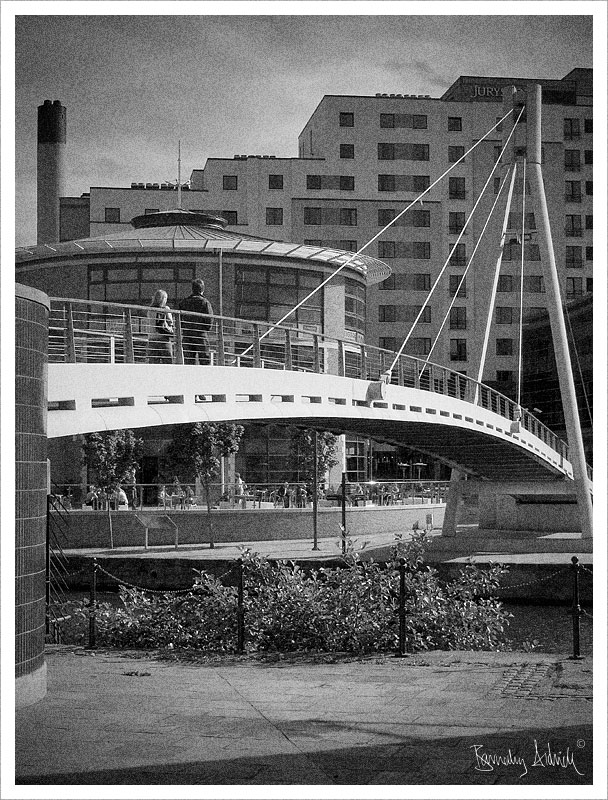The fortunes of Clarence Dock and Holbeck have long been intertwined. Clarence Dock was a major transport hub in Leeds, where coal to power the heavy industry in Holbeck was brought in by canal barge from the coalfields of Yorkshire.
The decline of heavy industry in Holbeck led to the decline of Clarence Dock and most of Leeds – south of the river.
But over the last decade Clarence Dock has been ‘regenerated’. According to one website it is
1.2 million sq.ft. of pure attraction. Clarence Dock is Leeds’ most exciting and largest mixed-use destination. Adjacent to the Royal Armouries the £250 million development has literally transforming the city’s waterfront creating a modern, vibrant and innovative urban destination.
(Glad to see that the money has gone into proper activities like planning and building rather than copy writing and proof reading!)
Holbeck too has had the benefit of massive regeneration. In the order of £800 million of investment from the public and private sector to create Holbeck Urban Village:
Poised to become one of the most dynamic business and residential developments in the UK, Holbeck Urban Village is more than just another development.
A pioneer of urban regeneration, Holbeck Urban Village, will set new standards in sustainable development creating over 5,000 new jobs in the high value digital and creative media sector.
The language is interesting. No ifs, no buts. Bold, assertive and powerful. No caveats about ‘economy permitting’.
Both developments are at the crossroads. The websites may describe them as vibrant and dynamic but the reality is that they are in danger of becoming modern day ghost towns. Shops going out of business and office space standing empty. ‘Lively Piazzas’ standing lifeless.
But just imagine that all had gone to plan and that a vibrant economy had allowed these developments to soar with the eagles? Ok we may have been looking at a sustainability nightmare and the already dreadful traffic problems might have been exacerbated. But think of the jobs! Think of the money! Think of the GDP! Think of the ever increasing value of the real estate!
And think about who would have benefited most? Certainly not people who have for generations lived in and around the area. Because this sort of development works (IF it works) by economic cleansing. It works by attracting vibrant, creative and skilled people to shiny, happy places to work and live. Our ‘gain’ is another communities loss. It is a ‘zero sum’ game.
And as the land values are driven up, long standing local businesses are forced out. When the cost of land south of the river was low it made good sense to brew beer on a large scale. It made sense to build a supermarket headquarters with low rise buildings and large car parks. There was plenty of space and not many others looking to move in. But this is regeneration. We economically cleanse the area of those who cannot generate enough GDP for the space that they take up.
But economic cleansing is not just about business. It is about housing too. Land values and house prices are driven up on the edge of the city and justifications are made for further ‘regeneration’. Family housing stock (low rise with gardens) are replaced by high rise designer apartment blocks.
The poorest are economically cleansed. Driven from the valuable land even further into the margins of the city.
But the stalled economy, and the stalling developments, offer us a chance to demonstrate a different approach to economic and social development. One that works with local communities instead of replacing them with the ‘creative classes’. Perhaps we can challenge the basically unsustainable short cuts to economic development with sustainable long term approaches to community development.
Instead of ‘bankrupting the club’ in vain attempts at ‘Going Up A League’, perhaps we can start to seriously and strategically address the challenges of ‘Narrowing the Gap’?
My question? Are community development professionals capable of offering a real alternative?
